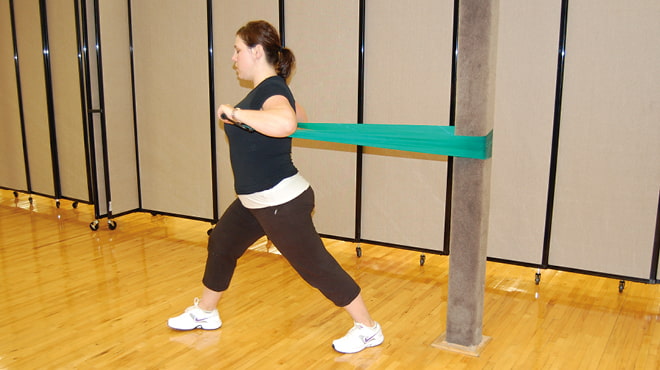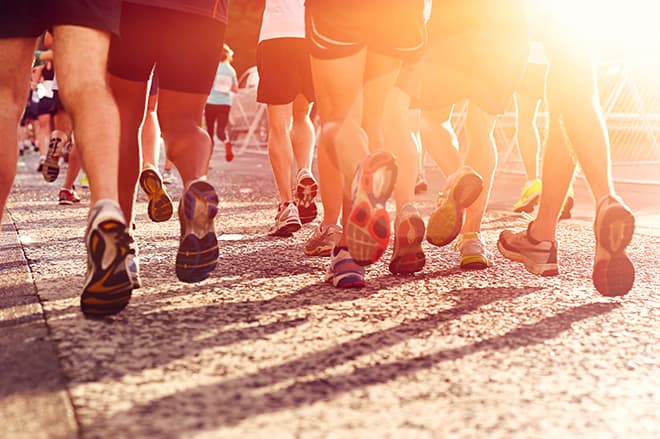Ways for seniors to remain active during winter

Physical activity is good for people of all ages, especially seniors. It can reduce your risk of chronic health conditions, and improve your mood, strength and balance.
Seniors should aim for 2½ hours of moderate-intensity exercise per week. Achieving this can be a challenge during the winter's cold, dark days. In addition, COVID-19 guidelines have led to more time spent at home and restricted access to some previously available indoor spaces.
Even with these challenges, seniors can do many things to remain active during the winter.
Here are some tips to get you started:
Find resources at a public library.
Most public libraries have a wide selection of exercise videos, books and e-books that focus on low-impact movement. While some libraries are closed due to the COVID-19 pandemic, some provide curbside pickup options.
Attend a virtual fitness class.
Today's seniors are more connected than ever. Use of technology has grown during the COVID-19 pandemic, with more use of virtual technology to connect with friends and family.
Why not use the same technology to participate in an exercise class? Local fitness clubs, and county aging and disability resource centers offer low-impact virtual classes or one-on-one training services using Zoom or other virtual technology.
Check with your health insurance company about virtual fitness class coverage, as some plans pay for some or all of class expenses.
Follow an online video.
There are thousands of exercise videos online, but don't just scan through social media sites and try to complete the first workout you find. Search for exercise programs specifically created for seniors, and incorporate stretching, strengthening and low-impact cardio. This may include chair yoga, seated strengthening exercises or chair stretching.
Schedule movement into your day.
A body at rest tends to stay at rest. This is especially true when the weather outdoors is bad.
Plan a specific time each day to move. Many people find it best to complete a workout in the morning when they feel the freshest and the day hasn't gotten away from them.
You can incorporate additional movement throughout your day, such as completing 10 squats while preparing lunch or coffee, putting away laundry one item at a time to walk extra steps, march in place during commercial breaks of your favorite TV show or getting up out of your chair every hour to walk a short distance in your home. Try these 15-minute workouts you can do at home.
Use what you have.
You don't need expensive fitness equipment at home to get a total body workout.
Consider these examples:
- Use cans of soup or water bottles as hand weights.
- Go from a sitting to a standing position out of a dining room chair two to three times in a row instead of just once.
- Walk up and down a hallway or large open space.
- Go up and down your stairs multiple times.
- Turn up the music and dance in your kitchen.
Get outdoors.
Winters can be cold and dark, but with the proper preparation and equipment, seniors can safely enjoy exercising outdoors. On days when it is icy or there is inclement weather and you do not need to go anywhere, stay inside to prevent falls or slips.
When venturing out, remember these tips:
- Wear proper footwear.
- Wear a pair of lightweight tennis shoes or boots with good support. You also can purchase snow grips for the bottoms of your shoes or boots.
- Take your time.
- Walks in winter are not a race, and there is no need to hurry. Take small steps, and watch for, and avoid, icy spots.
- Walk with a friend.
Catch up with a friend while exercising, but don't forget to wear a mask.
Incorporate variety.
People tend to focus on only one type of exercise, such as walking. Variety in your routines, incorporating five elements of fitness, reduces boredom and lowers the risk of injury.
Try to incorporate these types of exercise into your routines:
- Endurance
These activities increase your breathing and heart rates. Examples include dancing, climbing stairs and brisk walking. - Strength
Strong muscles help seniors remain independent and make everyday activities easier. Examples include lifting weights and using resistance bands. - Balance
These activities reduce the risk of falls. Examples include standing with your feet next to each other, standing on one foot and then the other, and tai chi. - Flexibility
Flexibility improves your joints' range of motion and makes daily tasks easier. Chair yoga and stretching can improve flexibility.
If you have heart disease, diabetes, a history of falls, vertigo or other chronic health conditions, talk with your healthcare provider about the types and amount of physical activity that is right for you.
Don't view winter as an excuse to stop exercising. There still are many things that you can do to safely incorporate exercise and movement into your routine. Learn more from the National Institute on Aging.
Kelly Carlson is a physical therapist in Fairmont, Minnesota.




